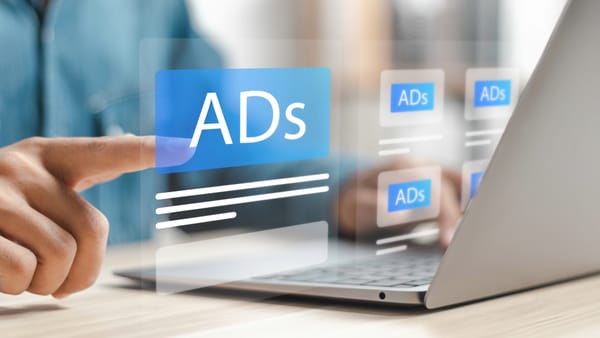Shopify Facebook Ads Guide for Beginners Chapter 6: Tracking and Optimizing Your Facebook Ads

Chapter 6: Tracking and Optimizing Your Facebook Ads
Once your Facebook ad campaign is live, the real work begins: tracking performance and continuously optimizing your ads. Optimization is not a one-time process; it’s an ongoing effort that ensures you get the best possible return on your ad spend. In this chapter, we’ll walk through the key metrics to monitor, advanced optimization tactics, and how to use A/B testing to refine your ads.
6.1 Key Metrics to Track
Tracking the right metrics is critical to understanding the effectiveness of your ads. While click-through rates (CTR) and conversions are essential, there are several metrics that, when used together, provide a clearer picture of your ad performance.
- Click-Through Rate (CTR):
- What It Measures: The percentage of people who clicked on your ad after seeing it.
- Why It Matters: A high CTR indicates that your ad creative is resonating with your audience. However, a high CTR without conversions could indicate a disconnect between what your ad promises and what your landing page delivers.
- How to Improve: If your CTR is low, experiment with different creatives, headlines, and offers. You can also try targeting a more specific audience or testing different ad formats (e.g., video vs. carousel ads).
Example Tip: Use Facebook’s Breakdown feature to see how different demographics (age, gender, location) respond to your ads. If younger audiences are clicking more but not converting, consider adjusting your targeting or offer.
- Conversion Rate:
- What It Measures: The percentage of users who complete a desired action (e.g., purchasing) after clicking your ad.
- Why It Matters: Conversion rate is a direct reflection of how well your ad and landing page work together to achieve your goals. A high CTR with a low conversion rate might mean your landing page isn’t optimized, or your ad isn’t bringing in the right audience.
- How to Improve: Ensure your landing page is optimized for conversions. This includes:Fast loading times (aim for under 3 seconds)Clear, compelling product descriptionsSimple checkout processesTrust signals (e.g., customer reviews, security badges)
Example Tip: Use tools like Hotjar or Google Analytics to analyze behavior on your landing page. If visitors drop off at a certain point, consider A/B testing different page elements like CTA buttons, form lengths, or even pricing.
- Cost Per Conversion:
- What It Measures: The average cost to acquire a lead or sale.
- Why It Matters: Your CPA should always be lower than the profit you make on each conversion. If it’s too high, you’re losing money on your ads.
- How to Improve: Lower your CPA by tightening your audience targeting (e.g., excluding unengaged users), improving your ad relevance score, or optimizing your bidding strategy (e.g., switching from automatic to manual bidding).
Advanced Tip: If your CPA is consistently high, consider using lookalike audiences based on your highest-value customers, or retarget users who have shown high intent (e.g., people who added products to their cart but didn’t complete the purchase).
- Return on Ad Spend (ROAS): T
- What It Measures: The total revenue generated for every dollar spent on ads.
- Why It Matters: ROAS is the key metric for determining whether your ads are profitable. Aim for a ROAS of 3 or higher for eCommerce businesses. A ROAS of 3 means that for every $1 spent on ads, you generate $3 in revenue.
- How to Improve: To improve ROAS, focus on increasing conversion rates or lowering costs. You can also optimize your product pricing, upsell or cross-sell related products, or target high-value customers (e.g., those who typically make larger purchases).
Example Tip: Set up Dynamic Product Ads (DPAs) to retarget users who have viewed or added products to their cart. DPAs show users the exact products they were interested in, which often leads to higher conversions and a better ROAS.
6.2 Optimizing Your Ads
If your ads aren’t performing well, don’t panic. Here are some optimization tips:
- Change your audience: If your ads aren’t converting, your audience might not be right. Use Facebook’s Audience Insights to better understand the demographics and interests of your converting customers.
- Lookalike Audiences: Create lookalike audiences based on your highest-value customers or email lists.
- Custom Audiences: Retarget visitors who have interacted with your store, such as those who viewed specific products or added items to their cart.
Advanced Tip: Segment your audience based on different stages of the buyer’s journey. For example, use one ad set for cold traffic (new users) and another for warm traffic (users who have visited your site or engaged with your brand). Use different messaging for each group.
- Test new creatives:
- Test New Creatives: If your ad fatigue sets in (CTR drops over time), swap out your visuals or videos. Use Dynamic Creative Ads to automatically test different combinations of headlines, images, and copy. Facebook will serve the best-performing combination to your audience.
Advanced Tip: Use User-Generated Content (UGC) in your ads. Real-life customer photos and videos tend to feel more authentic and trustworthy, which can increase engagement and conversions. Encourage your customers to share their experiences on social media and use their content in your campaigns.
- Refine your copy: Make sure your ad copy is clear and compelling.
- Increase your budget:Increase Budget for High-Performing Ads: If a specific ad is performing well, increase its budget to maximize results. However, don’t increase your budget too rapidly — increasing by more than 20% at a time can disrupt Facebook’s learning phase.
Advanced Tip: Use Facebook’s Automated Rules to automatically adjust your budget based on performance. For example, set a rule to increase the budget if your CPA is below a certain threshold or pause ads if the ROAS drops below a specific number.
6.3 A/B Testing for Consistent Improvement
The best way to improve your Facebook ads over time is by A/B testing. By testing different elements of your ads, you can identify what resonates best with your audience and refine your strategy for maximum impact.
Conclusion
Tracking and optimizing your Facebook ads is critical for long-term success. Focus on the right metrics, continuously test and refine your creatives and audiences, and make data-driven decisions to maximize your return on ad spend. With the right strategy, you can turn underperforming campaigns into profitable ones and scale your Shopify store to new heights.



